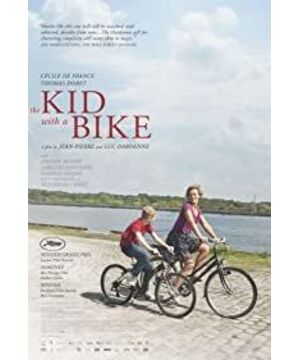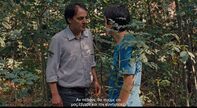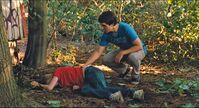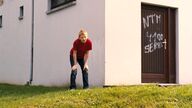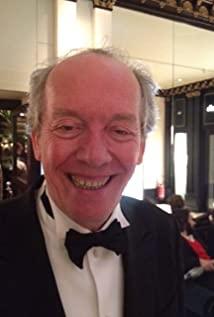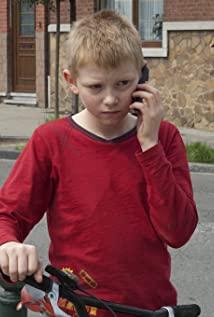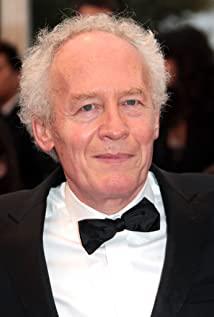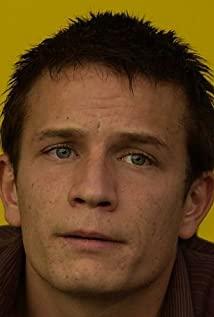From the moment the picture starts, my attention is attracted by the tension of the plot, which is different from many films I have seen. The first thirty minutes of the film is the stage of character building, and it is necessary to explain the protagonist's background, identity, personality, etc. to make the characters distinct. Plump, the film gives me the feeling that the construction stage is obviously divided into three parts, and the dramatic conflict part is directly advanced to catch the audience's attention, and then the other plot contents of the first part of the whole film are unfolded in reverse order. In other words, the creative team is actually There are many "climaxes" arranged in the movie, and each climax is regularly distributed in each stage, giving you some stimulation from time to time. This is a good way to learn.
I really like the moving long shots used in the movies. I think about the reason, maybe I am keen on real recording, and try to design as few shots as possible to confuse the audience. All the meanings and ideas are left to the audience to make their own opinions. Secondly, I admire the director, shooting, and shot scheduling. It's beautiful and natural, especially like a long shot of sports, which requires precise and skilled control skills.
I found that many shots are too close-up. It is very difficult to complete the conversion from panorama to close-up in one shot, plus the character scheduling. .
I'm curious how the photographer can quickly change the zoom and depth of field range during shooting, because it's not obvious, it's hard to see the technique, it would be nice if there was a documentary.
I was impressed by the visuals of the film: the little boy's red top, and the colors the other characters wear when they appear. Red, blue, yellow... The characters who have an influence on the boy are dressed in red or contrasting colors, the director deliberately should have a purpose, but unfortunately I haven't fully realized what it is.
The characters in this movie are simple, and to be precise, the plot is relatively simple and simple. It is the mental journey and physical and mental transformation of a boy after being abandoned. However, I don't quite understand some parts. Why did the barber shop owner decide to adopt the boy? And why is she so enthusiastic? The orphanage's teacher also seemed to be relatively indifferent, and did not care much about the boy's inner changes.
The boy finally found his father after a lot of hard work, but after the real meeting, the two of them looked at each other and didn't even want to talk too much. The two stood behind the counter for a long time. They missed so much but didn't show it. It's very heartbreaking, the cruelty of being a father is so cruel, and the child is so innocent and pitiful. I think if my parents were like this, I would have been crying with tears in my eyes, is the boy strong or is it because of cultural differences?
The boy fell from the tree, lay down for a long time before getting up, patted his clothes, and said nothing, quietly went to the side of the road, picked up the sawdust, and rode his car towards home. The father and son were dumbfounded watching the boy's actions. To be honest, I don't really understand why this scene was designed. There are obviously many ways to show forgiveness. Maybe people who hurt their lives can still be forgiven, so let's really let go. I remembered some of my own experiences. At that moment, I was actually confused. I was still in a state of chaos. I felt uncomfortable when I saw the panic and worried expressions of others. I really wanted to leave. At that moment, I didn’t want to blame anyone. In the face of certain situations, it is true, but it is too rigid to have to define it from the perspective of academic research or to attribute it to the director's intentions.
View more about The Kid with a Bike reviews


